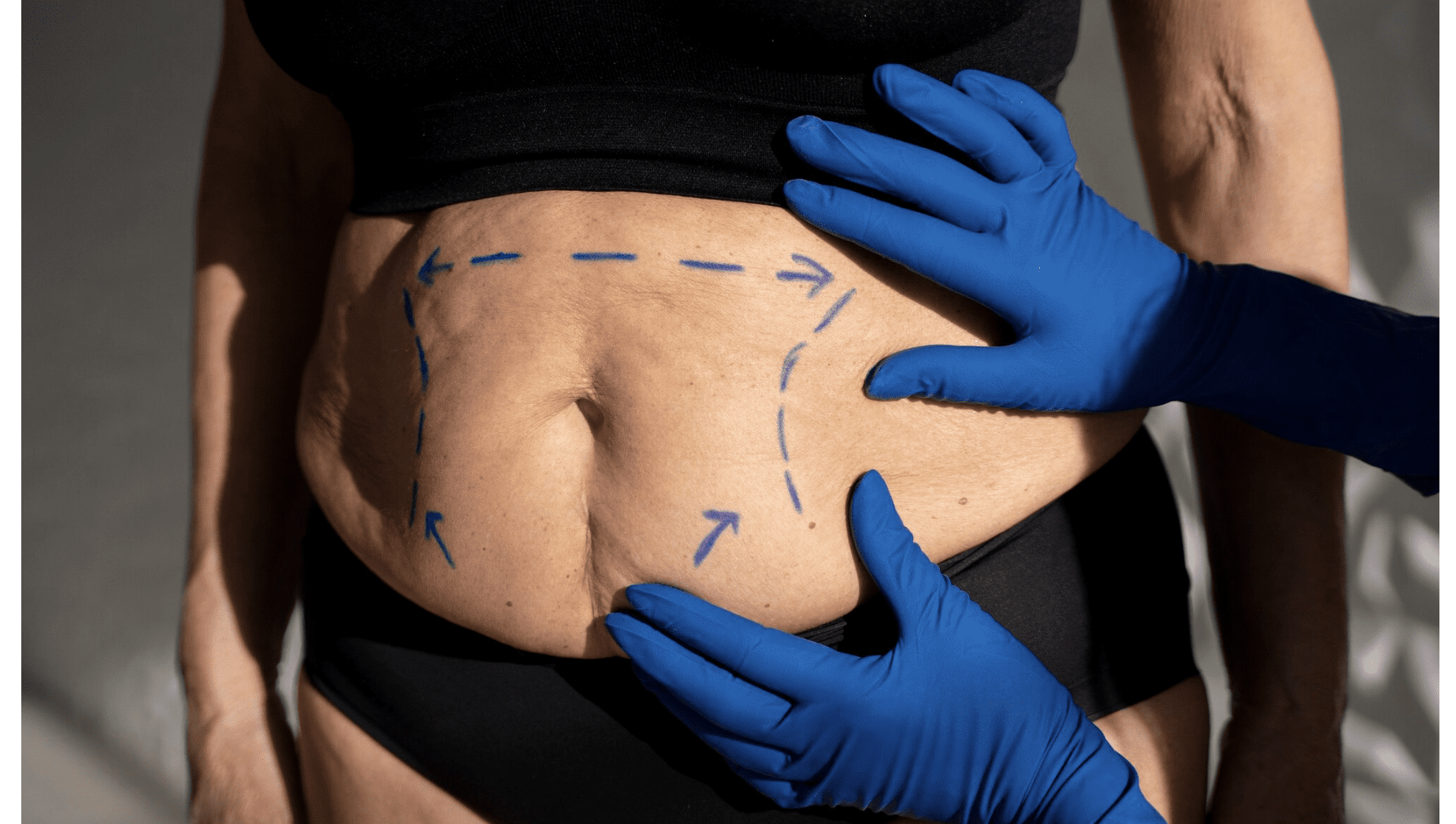How Liposuction Surgery is Performed: All the Details of the Procedure
Thanks to liposuction, the dreams of many women and men about a slim figure become a reality. This is a surgical procedure aimed at reducing the volume of fat tissue. To perform it, it’s not enough for the patient to just want it; medical indications are necessary. Contrary to popular belief, liposuction does not treat obesity, as it is a complex problem in the body, but the procedure can be part of the treatment, as it reduces the volume of the body and helps it achieve the desired shape.
What is Liposuction?

Liposuction is a surgical procedure designed to correct the contours of the body by removing fat deposits. The surgery effectively combats obesity, which causes body shape distortion. Surgeons often deal with “saddlebags” on the thighs or fatty deposits on the front and sides of the abdomen. Now that you understand in theory what liposuction is, let’s move to the practical side.
Indications for Liposuction
The main indication for liposuction is the presence of fat deposits that cannot be eliminated by diet, physical exercise, or other non-surgical methods.
Surgical fat removal is recommended in the following cases:
-
Dissatisfaction with one’s figure after childbirth, especially when “fat traps” are present on the hips, abdomen, and back.
-
Visual body contour distortion.
-
A tendency for fat to accumulate, especially in the abdominal area.
-
If the patient has a high percentage of excess weight, liposuction may not deliver the expected result, as mentioned earlier, it is not the main method of fighting excess weight.
Contraindications
Like any other surgical intervention, liposuction has a clear list of contraindications:
-
Due to sagging skin, liposuction is not recommended for people over 60 years old. At this age, the epidermis loses elasticity and becomes prone to sagging.
-
People with diabetes, flare-ups of infectious and chronic diseases should avoid liposuction.
-
The surgery will not be performed during pregnancy, if there are blood clotting issues, or during acute stages of cardiovascular diseases.
Liposuction: Consequences
Everyone wants to lose weight without spending effort and time, especially if after long workouts fat stubbornly stays in place, and the centimeters don’t decrease. The idea of surgery may seem like an easy way out.
The key is to choose the right surgeon because much depends on their qualifications. A doctor may advise against liposuction if any contraindications are present, and this is the right approach, as the patient’s health should be preserved.
The main issue is that even after the procedure, there is no guarantee that fat won’t accumulate in other areas. Liposuction is a fat removal surgery that doesn’t affect the speed of metabolism, so a person may regain weight. Fat won’t reappear in the treated areas but may accumulate elsewhere. After the operation, it is important to focus on proper nutrition, move more, and exercise. A sedentary lifestyle will eventually lead to changes in body shape that are not favorable. It is also essential to choose a qualified doctor and follow their recommendations carefully.
Types of Liposuction
-
Vacuum Liposuction: This is the classic method, where the surgeon works manually. Small punctures are made in the skin, and a special instrument is inserted. The fat is liquefied and then extracted. The result of the intervention depends on the skill of the specialist.
-
Ultrasound Liposuction: Fat is broken down under the action of ultrasound. This allows for the removal of large volumes, but thermal damage to tissues may occur. Healing is slower, and the patient needs to wear special compression garments for about a month.
-
Innovative Method – Soft Lipomodelling: In this method, fat deposits are broken down by high-frequency microcurrent pulses and removed through punctures. After the surgery, the use of a compression bandage is recommended.
The method of liposuction is discussed with the doctor.
Preparation for Surgery
Anyone considering body contour correction will want to know how liposuction is performed. The procedure begins with a consultation with the doctor. The doctor needs to ensure that the patient’s health is normal and that the skin has good elasticity. However, even if the skin is saggy, it is not always considered a contraindication. For example, after liposuction on the cheeks, a facelift is performed, resulting in youthful and firm skin.
Regardless of the area to be treated, a complete examination is required, including tests, fluorography, and a consultation with a therapist. For fat removal from the sides, ultrasound diagnostics are often used to rule out the presence of tumors. Thus, an abdominal ultrasound and laboratory tests for blood and urine are conducted. Ten days before the surgery, the patient must refrain from taking any medications, drinking alcohol, and smoking. The clinic will also perform a complete intestinal cleanse.
How Liposuction is Performed
Patients are often curious about how liposuction is done. In some cases, this helps them make the final decision. The procedure depends on the chosen method.
For example, vacuum liposuction involves small punctures in the problem area, through which cannulas are inserted to remove the fat. No stitches are needed because there are no incisions. The vacuum method directly targets the fat cells, so the volume of the waist, abdomen, or other parts of the body noticeably decreases.
Anesthesia for Liposuction

Liposuction in Turkey is performed only under general anesthesia. In rare cases, local anesthesia is used. The decision is made by the plastic surgeon and the anesthesiologist, based on the volume of fat deposits, the method of surgery, and other factors. General anesthesia is used for liposuction of several areas or combined surgeries.
Liposuction is one of the most popular procedures for body contouring. However, it is surrounded by many myths and misconceptions. Many fear the surgery based on outdated stereotypes and fears, but modern liposuction methods have changed significantly, making it a safe and effective procedure.
Recovery and Rehabilitation
After liposuction under general anesthesia, the patient stays in the hospital for a day. With local anesthesia, the patient can leave within an hour, provided they follow the doctor’s recommendations.
A critical part of the postoperative period is wearing compression garments for 14 days to a month. These garments shape the correct silhouette and tighten the skin. In the beginning, they must be worn 24/7, then just at night. Physical activity is limited for a month. The patient uses anti-swelling treatments, but any discomfort will gradually subside.
Before making the decision to undergo liposuction, it’s essential to consult with a qualified and experienced plastic surgeon who can guide you through the process and ensure the best possible outcome.
What Medicine Cannot Do
Medicine cannot maintain the body in tone or keep the results obtained from liposuction. It is necessary to choose a proper lifestyle and keep the body in good shape. The plastic surgeon does most of the work, and the patient only needs to maintain their figure and enjoy a beautiful, slim, and toned body for many happy years.






